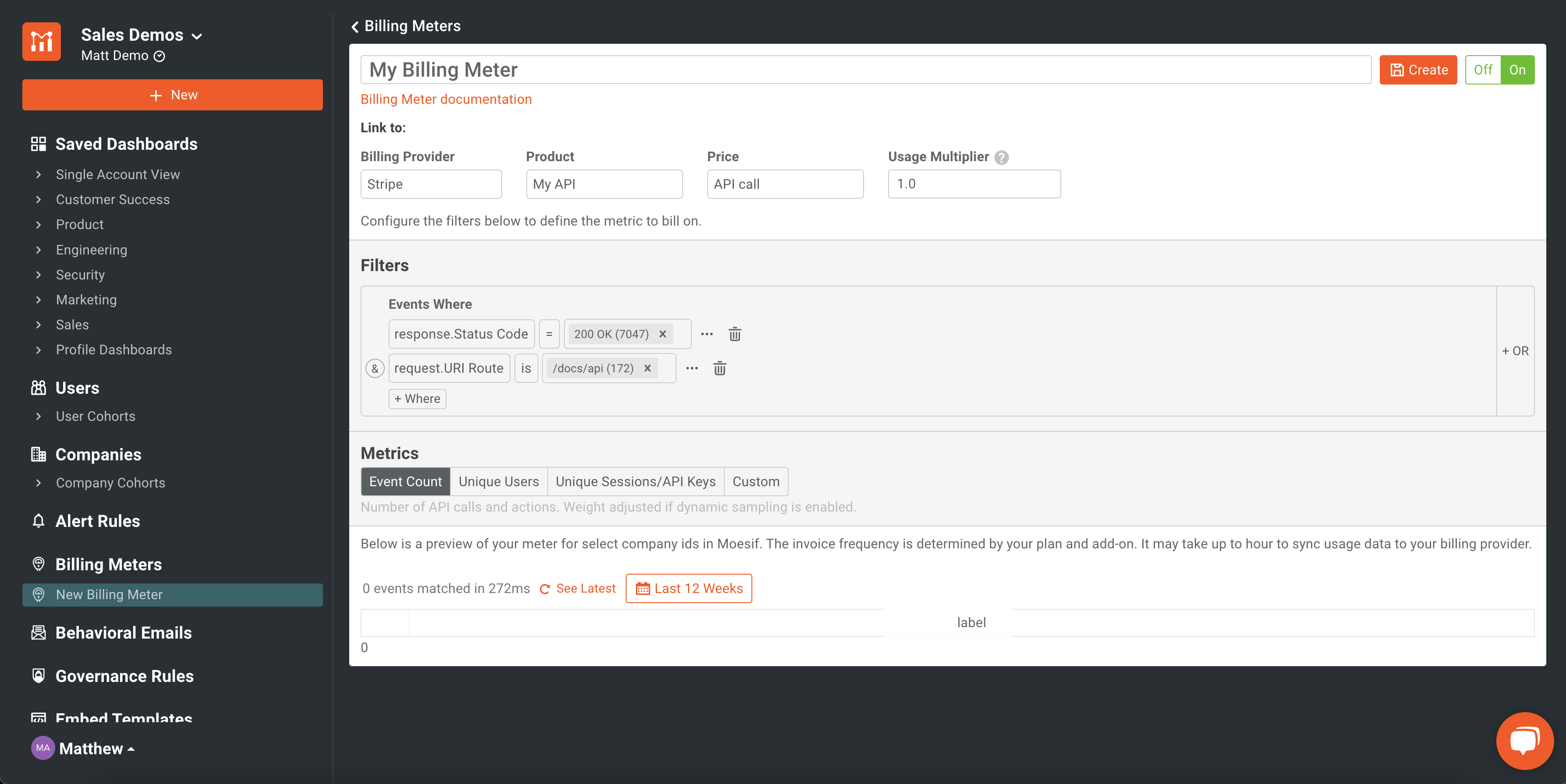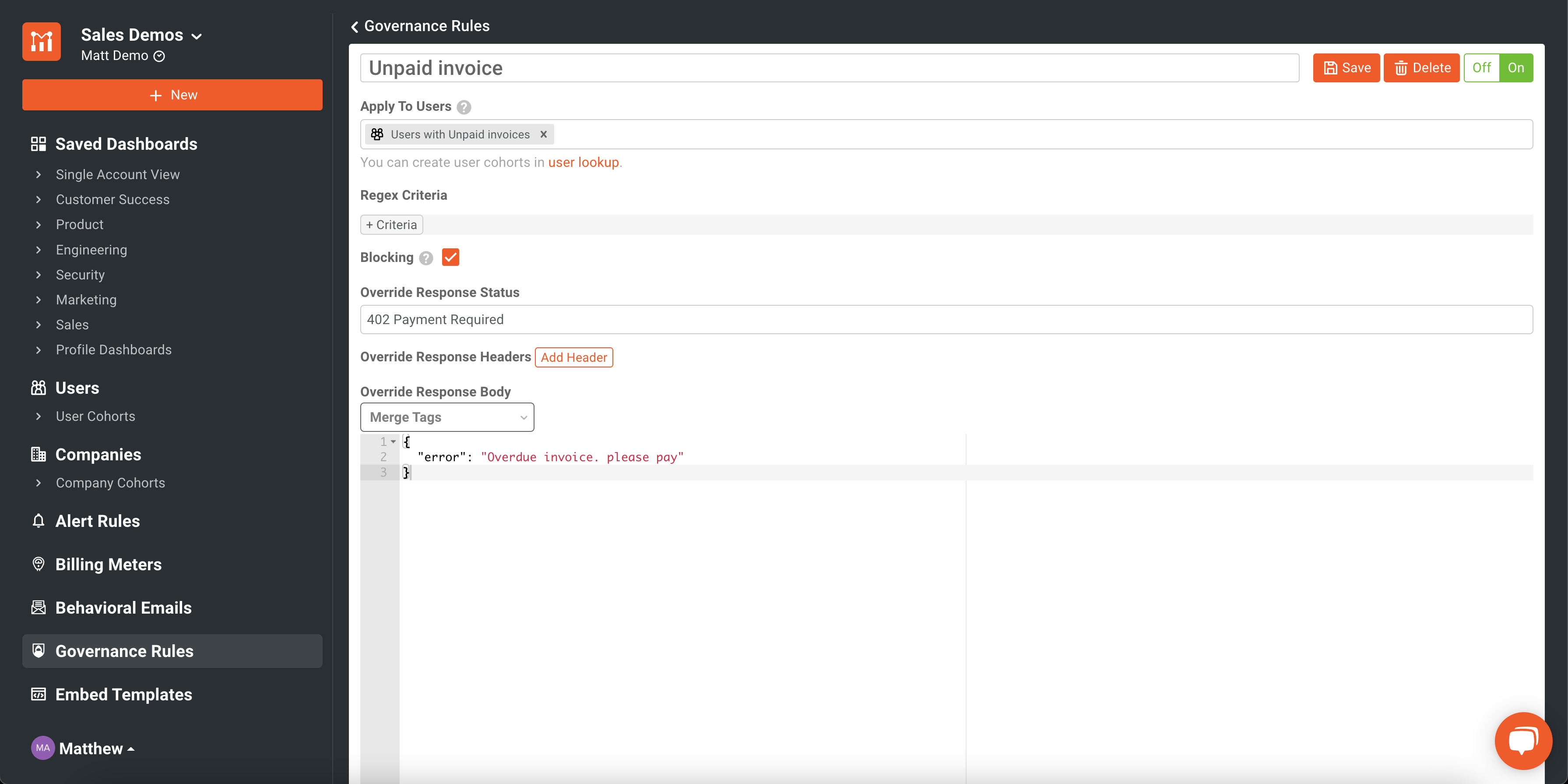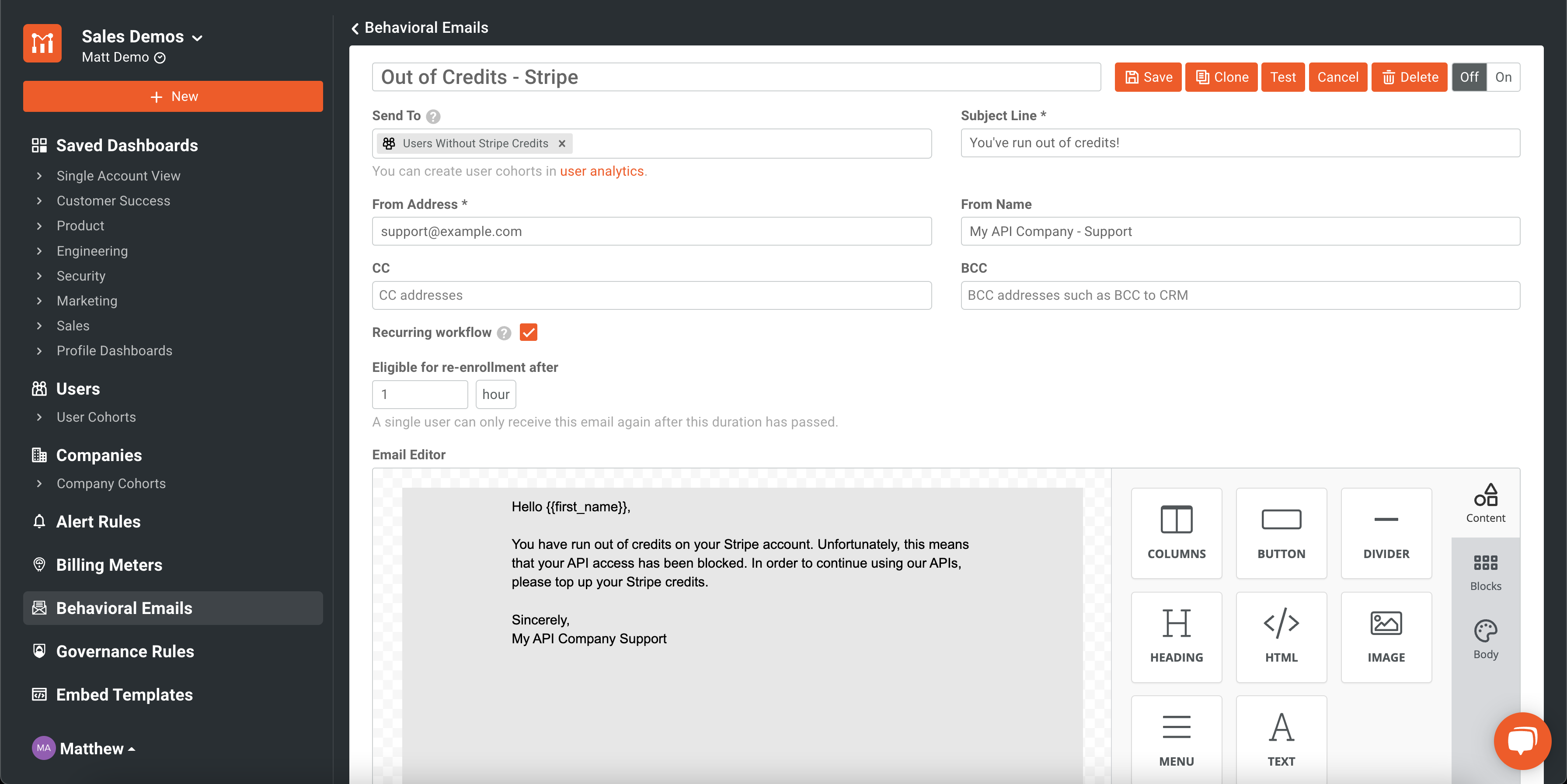API Monetization: The Ultimate Guide
The technology you choose to start your project with determines what your product is capable of now and what it will be capable of in the future. Finding the right stack to build on top of is one of the biggest engineering challenges you can face. Picking a stack that allows you to build a product and get to market rapidly is excellent unless that same choice limits the scalability and features of a product in the future. Pick a stack well beyond your current and future needs, which could lead to difficulties in building the initial project you’ve set out to build. A balance must be struck between your current needs and the needs of your product and customers in the future.
When making money from your APIs, picking the right stack can help you get up and running quickly and allow flexibility for your business and its customers. Let’s look at a few ways to assess which stack best fits your API monetization needs.
What is API monetization?
Everything runs on APIs, and the API economy continues to grow. Do you have an API product that other individuals or companies may want to use? Then, usage-based billing and API monetization are something you’ve likely thought about. When we speak of API monetization, we look at how we can bring in revenue from our APIs, whether through charging per user, per API call, or another metric. If your business model doesn’t include using your API resources to drive additional revenue, you could leave cash on the table. API revenue could be a swift win, especially if you have public APIs that could be useful to other businesses.
How you charge for usage and when will depend on your billing model. You may make money by charging an API consumer after they have used your API through a post-paid billing model. You may also charge an API consumer up-front for usage in a pre-paid or pay-as-you-go billing model. There are many different ways to make money from your existing APIs and from the ones that are being built.
Once you’ve decided to use your APIs to generate further revenue, you must build a solution. The solution will likely have a few moving parts, and each of these parts will play a crucial role in your API monetization stack. First, let’s look at different monetization models, as they can sometimes impact the technologies we will use within our API monetization stack.
What are API monetization models?
API monetization models refer to the various strategies businesses adopt to generate revenue from their API offerings. As an API provider, there are many ways to do this, and many businesses will use one or multiple models to sell their APIs. These models are crucial for sustaining API-driven business initiatives and ensuring a return on the investment for the time and money allocated for developing and maintaining the monetized APIs. Let’s take a brief look at some monetization models that may apply to your APIs.
-
Freemium Model: In this model, the basic version of the API is offered for free with limitations on usage, features, or data access. Users who require advanced capabilities, higher rate limits, or premium data can upgrade to a paid version. This model acts as a gateway to attract potential customers, giving them a taste of the API’s potential before they commit to a paid plan.
-
Subscription Model: This is one of the most common monetization strategies. Here, users pay a recurring fee, often monthly or annually, to access the API. The pricing can be tiered based on usage limits, features, or the level of support offered.
-
Pay-as-you-go Model: Users are billed based on their API usage. This model is particularly appealing to businesses that have fluctuating API usage needs. They pay for what they use without being tied to a fixed subscription cost.
-
Transaction-based Model: This model charges users for every transaction made via the API. It’s suitable for APIs where each request has a significant value, such as payment gateways or e-commerce platforms.
-
Affiliate Model: Here, API providers earn a commission for driving business to third-party services. For instance, a travel API might provide hotel booking capabilities and earn a percentage of every booking made through their system.
-
Data Monetization: In this model, businesses monetize the data accessed through the API. Users might pay to access unique datasets, analytics, or insights the API provides.
-
Indirect Monetization: Not all APIs are monetized directly. Some are offered for free to drive engagement to the main product or service. For instance, a company might provide API access to a particular user base to drive sales (especially when the API is only available on an “enterprise” plan) or to create an ecosystem around its platform.
-
One-time Purchase: Less common but still viable, in this model, users pay a one-time fee for perpetual access to the API. It’s more suited to APIs that don’t require continuous maintenance or updates and have relatively low volume.
When choosing an API monetization model, it’s essential to consider your target audience, the perceived value of your API, and the costs associated with maintaining and updating the API. It’s also beneficial to remain flexible as business needs and market dynamics change. As mentioned at the start of this section, a hybrid approach, combining two or more models, might be the best fit for some businesses, while others can pick a single approach and run with it.
Getting started with API monetization
When it comes to implementing an API monetization solution, you’ll need to build a technical stack to do so. In its simplest form, an API monetization stack has two components: your API and a billing provider. Unfortunately, to make the combination of these work, it becomes quite difficult to implement. Customization and expert knowledge are required to make this work efficiently and accurately.
A more practical approach is to break the solution into 3 parts: your API, a platform to track API usage, and a billing provider. Let’s look into the role of each of these components.
The API
The API is where the value to users will sit. Here, when we talk about “the API,” we refer to everything to do with the API, including securing the API, rate-limiting, transformations, etc. Usually, part of the API setup includes some API management layer, like an API proxy or an API gateway. Most modern businesses are using API gateways such as Kong, Tyk, AWS Gateway, or one of many other alternatives.
API Analytics (for tracking usage)
As the API is being used, you’ll want to gather metrics about that usage. Since the analytics platform is seeing API consumption metrics around every API call, it makes sense for this to be the system of record for tracking usage and sending it to the billing provider.
Billing Provider
The billing provider will receive usage amounts for each customer, tally up the amounts over the billing period, issue an invoice, and collect on the amount owing. With Moesif in the picture as the API Analytics piece, this is roughly how things look at a high level.
Choosing gateway or proxy for your API
When choosing a gateway or proxy for API management, it’s essential to understand exactly what functionality you will need. Almost every gateway on the market has some differentiators which may make it more or less suitable for your use case. To really dig into the gateway versus proxy argument, check out this quick breakdown we put together.
One thing is for sure: using an API gateway will make securing and managing your APIs much more straightforward than doing it without. Most gateways support various authorization and authentication protocols to control API access, tools for generating and managing an API key, great support for rate limiting and quotas, and other features such as the ability to apply transformations to requests and responses. An API management platform also usually provides a developer portal so that API users can easily see which APIs are available and get access to them.
Although APIs can be managed without an API gateway or proxy, having one means that you can establish a more uniform way to secure and manage the APIs. Essentially it allows you to manage all of your API-related concerns under a single pane of glass. From a scalability and security perspective, there’s no better solution.
Popular API management tools include Kong, Tyk, AWS Gateway, Azure API Management, and many others. Each will have its own pros and cons, just like any other piece of software or infrastructure. For more information on how some of these compare, check out this article we wrote to help with precisely that.
Choosing a billing provider
When choosing a billing provider, as with any technology you incorporate into your stack, you should be aware of current and future use cases and how the technology can support them. Take stock of your product roadmap and map out the technical pros and cons of each solution. A great overall picture of the differences is mapped out here. You’ll also want to be aware of what it takes to integrate the billing provider with your current solution. Different providers have different ways to integrate, making them more or less suitable for your project. Another detail is ensuring the billing provider can support your API monetization model.
On top of the technical requirements, there are a few other operational factors that should also go into choosing your provider. These factors are highlighted below.
Cost
For most companies, this will be the main factor outside of comparing the capabilities of the technologies. If both billing platforms will technically work for your project, the next focus will be on cost.
The cost of a platform could be calculated in many different ways. It could be done as a flat rate, percentage, or a mixture of both. You’ll also need to factor in the volume you’ll be passing through the system since that can also lead to discounts, which may make a certain provider more attractive.
Reporting
The reporting tools built into the platform can help the business side of an organization easily see the results of API monetization. Most platforms have a minimal amount of reporting, while others have incredibly detailed reports available. If you’d like out-of-the-box reports versus homegrown ones, this should be an important factor.
Customer Support
If an issue does occur, it’s great to know that the provider can provide quick support to remedy the problem. You’ll want to make sure that you look at different support packages the provider offers, what the SLA is for turnaround on minor and major issues, and also look at some customer reviews to see if existing users are happy with the support.
How to set up API monetization using Moesif
Bridging the gap between your APIs and the chosen billing provider is where Moesif comes in. Moesif has the unique ability to keep track of usage, add it up, and then send the usage records to the billing provider to charge upon. This is all available in Moesif right out of the box.
Moesif allows for full-service API monetization. This means that Moesif can cover all of the gaps that are crucial to creating a strong API monetization stack. This includes tracking usage, blocking usage on accounts with overdue invoices, keeping customers informed of usage, and alerting internal teams about any concerning behaviors or possible upsell opportunities.
Billing meters
Billing meters are the heart of the Moesif monetization solution. A billing meter allows you to describe how you want to charge users and specify that criterion. These could be criteria such as billing on a specific endpoint, a specific part of the request, a response code, a combination of all three, or any other criteria imagined.
Once the billing meter is set up, it will report this usage to the billing provider at scheduled intervals. This can be done in a matter of minutes and takes absolutely no code to create. Billing meters in Moesif can currently be integrated with Stripe, Recurly, and Chargebee. These options for integration will continue to grow as we learn more about our customer’s favorite billing providers.

Governance
Governance can allow Moesif to block calls when an invoice is overdue, or, if you’re doing a pre-paid setup, can block an API consumer once they have run out of credits on their account. Again, all of this can be done with no code, no engineering support, and can go live in a matter of minutes.
Governance rules can be set up by configuring a filter that suits your exact needs and specifying what you would like to override the response with. For instance, if a user has run out of credits to use the API or has an overdue invoice, you may return a 402 Payment Required status and a JSON body that goes into more detail.

Behavioral emails
Automated emails become handy when a user is going into the next usage tier, getting close to a rate limit or quota, or is out of credits. Of course, there are plenty of other scenarios where automated emails can also help. The great part about using behavioral emails in Moesif is that it keeps customers informed about key events while reducing the support and sales team burden. In contrast, in the past, they would need to reach out directly.

Alerts
On top of behavioral emails, it also may make sense to send notifications to different internal teams based on a company or user’s actions. For this, we can use Moesif to set up alerts to be triggered by specific criteria. These alerts can be delivered through email and SMS, as well as alternatives like Slack, PagerDuty, or a custom webhook.
For monetization, this might consist of letting the sales team know that a user is ready to move to a new plan based on their volume or behavior. It may also mean sending your finance or collections department an alert letting them know that a delinquent customer is trying to access an API.

Advantages of using API monetization
API monetization not only provides a revenue stream for businesses but also comes with a suite of other benefits. Below is a brief list of key advantages of implementing API monetization:
-
New Revenue Channels: One of the most direct benefits is the creation of new revenue streams. Whether through a subscription model, pay-per-use, or affiliate earnings, monetizing your API can contribute significantly to the bottom line.
-
Increased ROI: For organizations that invest heavily in API development, monetization can ensure a return on investment by generating profits over and above the operational costs.
-
Boost in API Adoption: A monetized API often comes with better documentation, support, and quality assurance. This can lead to increased trust in your product and, consequently, higher adoption rates among developers and businesses who want to use it.
-
Enhanced Market Reach: Since third-party developers can use the monetized APIs to create applications that cater to niche markets or specific audiences, API usage can help expand beyond the reach of the original service.
-
Building Ecosystems: Monetized APIs can foster a community or ecosystem of developers and partners. This ecosystem can lead to collaborative ventures, shared innovations, and a network effect, enhancing the value of your APIs and the associated products or services.
-
Improved Feedback Loop: A monetization model often means more engagement with end-users and developers since they pay for access. This can lead to valuable feedback, which can be used to refine and improve the API, ensuring it meets market needs and fits into applicable use cases.
Incorporating monetization into your API strategy not only makes financial sense but also paves the way for growth, collaboration, and continuous improvement of your APIs. As APIs and API monetization become more mainstream, businesses that leverage and monetize their APIs effectively will be better positioned to thrive in such an ecosystem.
Conclusion
Monetizing APIs is a complex project, but it doesn’t have to be complicated. Along with an excellent API strategy and robust API design, by using reputable and proven technologies to get you to market quickly while keeping quality high, you can quickly drive revenue from your APIs. Choosing the right stack for your monetized API is crucial for the needs of today but also for making sure that you have what it takes to expand into tomorrow confidently.
No matter what you choose, using Moesif as the hub for your API monetization strategy saves time and effort while delivering scalability and stability for your newest revenue stream. Try out Moesif’s API monetization platform today by signing up and starting your API monetization journey.






